This article was co-authored by Claudia Carberry, RD, MS. Claudia Carberry is a Registered Dietitian specializing in kidney transplants and counseling patients for weight loss at the University of Arkansas for Medical Sciences. She is a member of the Arkansas Academy of Nutrition and Dietetics. Claudia received her MS in Nutrition from the University of Tennessee Knoxville in 2010.
There are 9 references cited in this article, which can be found at the bottom of the page.
This article has been viewed 18,124 times.
Nutritional yeast is a relatively low calorie ingredient that is highly nutritional. It's high in protein and B vitamins, including B12. It's also vegan and gluten free. It can be found in the health section of most grocery stores and has a yellow, flaky appearance.[1] Top foods like salads, roasted vegetables, and popcorn with nutritional yeast. Substitute nutritional yeast for cheese to make non-dairy pizza or “cheesy” mashed potatoes. Get creative with nutritional yeast by using it to thicken sauces or make gravy.
Steps
Topping Foods with Nutritional Yeast
-
1Sprinkle nutritional yeast on salads. Nutritional yeast will add a mild, savory flavor. The high water content of many greens, like lettuce, can reduce the natural dryness of the yeast.[2] Layer the yeast atop salads to suit your tastes.
- If you enjoy using nutritional yeast as a salad topping, you might want to store the yeast in a wide-holed shaker, like the kinds used for parmesan cheese.[3]
-
2Garnish roasted vegetables. As soon as the vegetables are done roasting, if they are dry, drizzle or brush them lightly with olive oil. After that, dust the veggies with nutritional yeast. This will give the roasted veggies a cheesy quality.[4]Advertisement
-
3Use nutritional yeast as a popcorn topping. Transfer your popcorn to a large bowl. If it doesn't already have butter on it, drizzle the popcorn lightly with olive oil and toss the popcorn to distribute the oil. Sprinkle with nutritional yeast while continuing to toss the popcorn to distribute the yeast evenly throughout the popcorn.[5]
-
4Season kale chips with nutritional yeast. Kale chips are already a pretty healthy snack, but they can be made even healthier by substituting nutritional yeast for salt. If salt consumption isn’t a concern of yours, try sea salt, cracked black pepper, and nutritional yeast together on kale chips.[8]
- Create a spicy topping for your kale chips by combining the following in a food processor:
- 2 tbsp (30 ml) of nutritional yeast, 2 tbsp of lemon juice, 1 tsp (5 ml) ground chipotle pepper, ½ tsp (2.5 ml) of sea salt, ¼ cup (59 ml) of cut red bell pepper, 1 cup (237 ml) of cashews (soaked in water for 2 hours), a pinch of cayenne pepper. Add these processed ingredients to your kale before baking it.[9]
- Create a spicy topping for your kale chips by combining the following in a food processor:
-
5Enrich fried foods with nutritional yeast. Fried foods are notoriously unhealthy. Season foods like French fries and onion rings with nutritional yeast to add a significant amount of protein and vitamins to the dish.[10]
- Nutritional yeast has a somewhat nutty flavor that goes along well with many different kinds of fatty foods, like fried foods, meats, salad dressings, and more.
- Fried foods should still be an “every once in awhile” food, even with the addition of nutritional yeast.
Substituting Nutritional Yeast for Cheese
-
1Use nutritional yeast in place of cheese in recipes. Many vegan sauces, especially those with cheese in them, use nutritional yeast as a substitute. Replace equal amounts of nutritional yeast for shredded cheese in recipes.
- For non-dairy versions of cheesy dishes, like cheesy rice, cheesy pasta, or cheesy vegetables, mix in nutritional yeast to the food immediately after it is removed from the heat. If the dish is dry, drizzle olive oil over it before mixing in the yeast.[11]
-
2
-
3Whip up some vegan cheesy mashed potatoes. Make mashed potatoes as you would normally. When the potatoes are well mashed, mix in nutritional yeast. The more yeast you use, the nuttier the flavor and the stringier the consistency.
- You may be able to achieve a richer consistency in your “cheesy” mashed potatoes by adding a tablespoon (15 ml) of butter to the potatoes. Adding butter will make the mashed potatoes not vegan or dairy-free, so you could add oil instead to keep it vegan.
- Dishes of a similar consistency to mashed potatoes, like scrambled eggs, can also be made into vegan-friendly “cheesy” recipes in the same fashion described for mashed potatoes.[13]
Getting Creative with Nutritional Yeast
-
1Substitute nutritional yeast for breadcrumbs. Breadcrumbs are often called for in recipes to help firm up mixtures. Nutritional yeast is a low carb, savory substitute for breadcrumbs. Use yeast in veggie burgers and other patties.
- Breadcrumbs are used to bread chicken. Use nutritional yeast in place of breadcrumbs to create a crispy outer layer around the chicken when it finishes cooking.[14]
-
2Thicken sauces and soups with nutritional yeast. Stir nutritional yeast into hot sauces and soups. As you stir in the yeast, the mixture should thicken. Continue adding yeast to the mixture until you reach the desired consistency.[15]
- Savory sauces, like red sauces, and hearty soups, like clam chowder, often have flavor profiles that are suited for the nutty flavor of nutritional yeast.
-
3Add nutritional yeast to salad dressings. Add a tablespoon (15 ml) of nutritional yeast to salad dressing to give it a vitamin and protein boost. Thicken dressings that are thin by stirring in yeast.
- Many kinds of vegan dressings use nutritional yeast to add a non-dairy cheesy quality to the dressing.
-
4Make gravy with nutritional yeast. Position a medium-sized skillet over medium heat. Add ½ cup (118 ml) of nutritional yeast to the skillet and toast the yeast while stirring constantly until you can smell the yeast. Then:
- Add 1/3 cup (79 ml) of vegetable oil to the yeast. Whisk the mixture. It should bubble and brown. When golden, add 1½ cups (355 ml) of water to the mixture while continuing to whisk.
- Stir in 2 tbsp (30 ml) of soy sauce into the mixture when it reaches gravy thickness. Add salt and pepper to taste.[16]
Warnings
- The high phosphorus content of nutritional yeast may lead to the depletion of calcium if consumed in high doses. If you have issues with low calcium or if you have chronic kidney disease, you may want to avoid consuming too much nutritional yeast.[17]⧼thumbs_response⧽
References
- ↑ http://www.bonappetit.com/test-kitchen/ingredients/article/nutritional-yeast-2
- ↑ http://www.mnn.com/food/healthy-eating/stories/11-ways-use-nutritional-yeast-and-why-you-should
- ↑ http://www.bonappetit.com/test-kitchen/ingredients/article/nutritional-yeast-2
- ↑ http://www.bonappetit.com/test-kitchen/ingredients/article/nutritional-yeast-2
- ↑ http://www.mnn.com/food/healthy-eating/stories/11-ways-use-nutritional-yeast-and-why-you-should
- ↑ https://www.bumblebee.com/popcorn-flavoring-ideas/
- ↑ http://www.huffingtonpost.com/2014/08/05/nutritional-yeast-dont-be-afraid_n_5628501.html
- ↑ https://www.allrecipes.com/recipe/228337/cheesy-kale-chips/
- ↑ https://www.eatingbirdfood.com/spicy-and-cheesy-kale-chips/
- ↑ http://www.bonappetit.com/test-kitchen/ingredients/article/nutritional-yeast-2
- ↑ http://www.mnn.com/food/healthy-eating/stories/11-ways-use-nutritional-yeast-and-why-you-should
- ↑ https://willamettetransplant.com/vegan-cheese-pizza-vegan-margherita/
- ↑ http://www.mnn.com/food/healthy-eating/stories/11-ways-use-nutritional-yeast-and-why-you-should
- ↑ https://www.youtube.com/watch?v=ZDuYDnWxHig
- ↑ http://www.mnn.com/food/healthy-eating/stories/11-ways-use-nutritional-yeast-and-why-you-should
- ↑ http://www.stltoday.com/lifestyles/food-and-cooking/recipes/article_e161341a-5975-5e6d-94f7-adbf6b643db4.html
- ↑ http://www.mnn.com/food/healthy-eating/stories/11-ways-use-nutritional-yeast-and-why-you-should
About This Article
To use nutritional yeast, try sprinkling it over your favorite foods, like salads, roasted vegetables, or popcorn. You can even use it to add protein and vitamins to fried foods like French fries and onion rings. If you're vegan or you just don't eat dairy, you can use nutritional yeast as a healthy cheese substitute. Just add it to pizza, cheesy sauces, and casseroles that call for cheese to give them a gooey, cheesy flavor. To learn how to make dressings and sauces using nutritional yeast, scroll down!
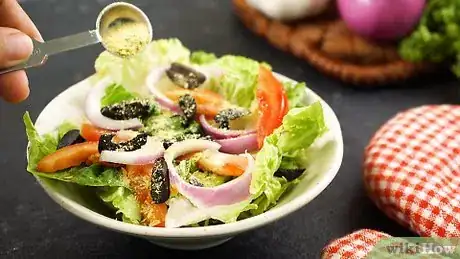
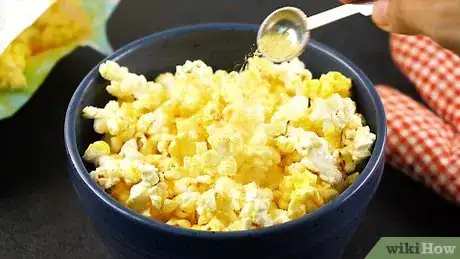
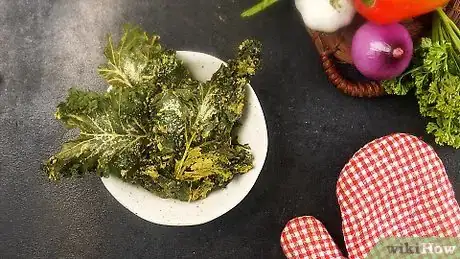
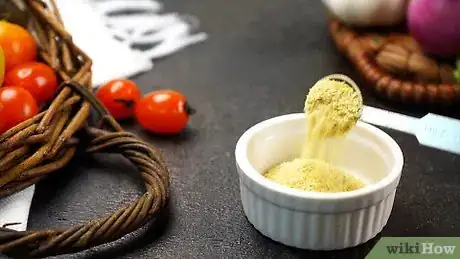
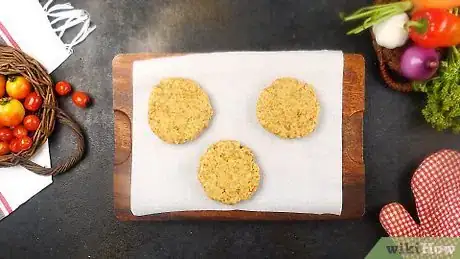
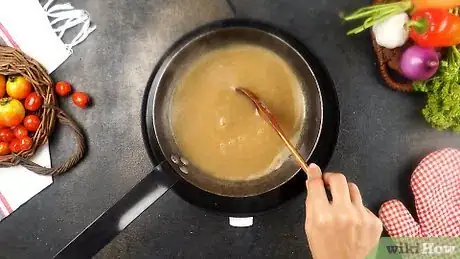
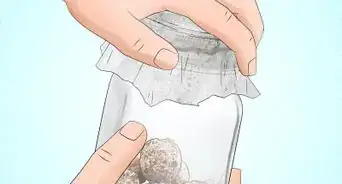
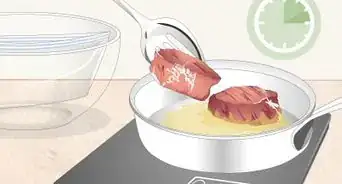
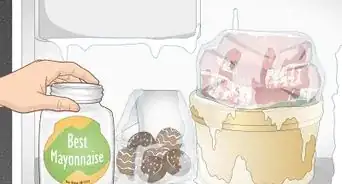

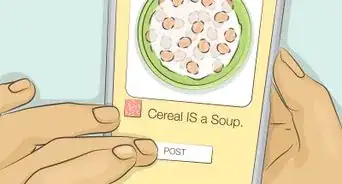
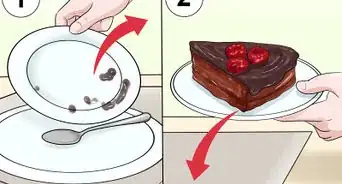

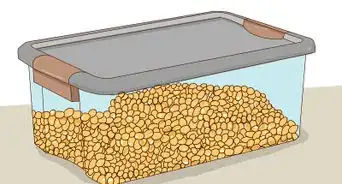















































Medical Disclaimer
The content of this article is not intended to be a substitute for professional medical advice, examination, diagnosis, or treatment. You should always contact your doctor or other qualified healthcare professional before starting, changing, or stopping any kind of health treatment.
Read More...